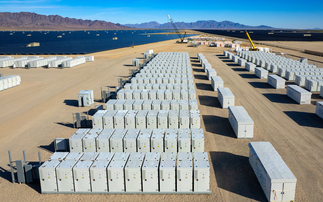Dramatically slimmed-down negotiating text will provide basis for last round of pre-summit talks, but it still highlights more than 200 issues that are yet to be resolved
The UN has today released a new slimmed-down version of the negotiating text for the global climate conference taking place in Paris later this year.
The new draft text is just 20 pages long, less than a quarter of the size of the previous 89-page document negotiators were working from. It is designed to provide a concise basis for negotiations at the final round of preliminary talks, which will take place in Bonn, Germany, on October 19-23.
The draft text sets out which elements of the deal will be legally binding, and which parts will go into an evolving decision document. It was drawn up by two co-chairs for the talks, Algerian diplomat Ahmed Djoghlaf and US diplomat Dan Reifsnyder.
The draft agreement includes a long-term global goal for a low-carbon transition, although a number of proposals for the precise nature of the new target remain in the text in square brackets, meaning they are still subject to negotiation by diplomats.
The text also confirms that countries will be expected to commit to the submission of new climate action plans pledging further carbon-cutting action every five years, in a bid to ensure the current Intended Nationally Determined Contributions (INDCs) submitted by countries can be strengthened if, as expected, they fail to put the global economy on a track to limiting global temperature increases to 2C.
The evolving decision document contains an option for a "facilitative dialogue" meeting in 2018 or 2019 to allow countries to take stock of the progress on cutting emissions before submitting their next round of climate action plans.
Loss and damage - a key concern for the less economically developed countries - is mentioned in the draft text, but details on how such a mechanism could be developed are reserved for the decision paper.
The draft also contains references to climate finance, including the potential for countries to scale up their pledge to provide $100bn per year from 2020.
Notably, all mentions of shipping and aviation have been removed from the draft text. The two industries - whose emissions are not regulated by national governments - had been called on to limit their emissions in line with internationally agreed targets in an earlier draft of the text.
It had also proposed a levy scheme that would require shipping and aviation to provide cash for the International Adaptation Fund, which would be used to finance climate projects around the world.
The proposal was strongly resisted by the two industries, which insisted they are working to curb emissions via the International Civil Aviation Organization (ICAO), the UN's aviation agency, and the International Maritime Organisation (IMO), the UN's shipping agency.
In total, the new text still contains 231 square brackets, suggesting negotiators still have a long way to go to finalise the agreement before the close of the Paris Summit in December.
The new text comes as the summit organisers wait for the last 49 countries to submit their INDCs after they missed the October 1 deadline. Some of the world's major oil producers - including Saudi Arabia and Iran - are among those who failed to meet the deadline, although all of the world's largest 10 emitters have now filed official climate action plans.
This article is part of BusinessGreen's Road to Paris hub, hosted in association with PwC









